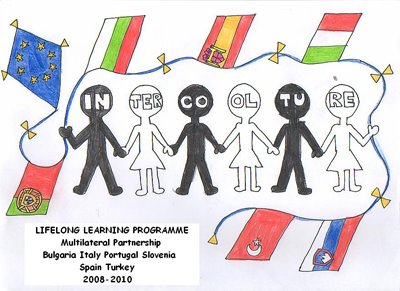
 The mistletoe and the holly are evergreen, symbol of fertility and life: we kiss under the mistletoe to wish a happy wedding.
The mistletoe and the holly are evergreen, symbol of fertility and life: we kiss under the mistletoe to wish a happy wedding.We also decorate the Christmas tree with coloured balls, flashing lights and a star at the top. Under the tree we put the presents that we will open on Christmas day.
We give our friends a nice plant as a present: it is called poinsettia, it has got exotic origins but it has become very common in Italy. Its leaves turn bright red at Christmastime.
Tombola is the Italian Bingo. We play it on Christmas Day at home after the big meal with all the family. The winner receives some prizes such as money and sweets.
Cards are a tipical Italian game. We play cards on Christmas Day with our relatives.
Cards are a tipical Italian game. We play cards on Christmas Day with our relatives.
Midnight Mass is longer and more intense than usually. After the traditional Eve dinner every catholic family goes to church to take part in Midnight Mass and to share with the community of believers the big event of the descent of Jesus Christ on Earth. Midnight Mass closes the period of Advent and opens the great ceremony of Christmas songs, lights, greeting cards, gifts, which witness the deep joy of the presence of Jesus.
Befana is often described as an old woman who flies on a broom. She is usually smiling and carries a big bag full of sweets and gifts for the deserving children, and also with coal for the children who haven’t been so good throughout the year.
According to the tradition, Befana arrives in the night between the 5th and the 6th January and fills the stockings that the children have hang beside the fireplace.
Befana is often described as an old woman who flies on a broom. She is usually smiling and carries a big bag full of sweets and gifts for the deserving children, and also with coal for the children who haven’t been so good throughout the year.
According to the tradition, Befana arrives in the night between the 5th and the 6th January and fills the stockings that the children have hang beside the fireplace.
On Christmas Eve in 1223, in Greccio, a little village in central Italy, Saint Francis recalled Jesus’s birth with a live nativity scene.
During Mass a baby in the flesh appeared in the crib, picked up by Saint Francis.
From this episode the tradition of the crib originated.
During Mass a baby in the flesh appeared in the crib, picked up by Saint Francis.
From this episode the tradition of the crib originated.
I don’t celebrate Christmas. I am a Jehovah’s Witness. I consider December 25th a day like all the other ones, I do my normal activities. Why don’t I celebrate Christmas? Because knowing what its origins are in my opinion it is a pagan feast. In fact December 25th was the holiday for the winter solstice and the Catholic church has adopted this date as the birth of Christ.Are there in your school any children who don’t celebrate Christmas? Are there any Jehovah’s Witnesses?











